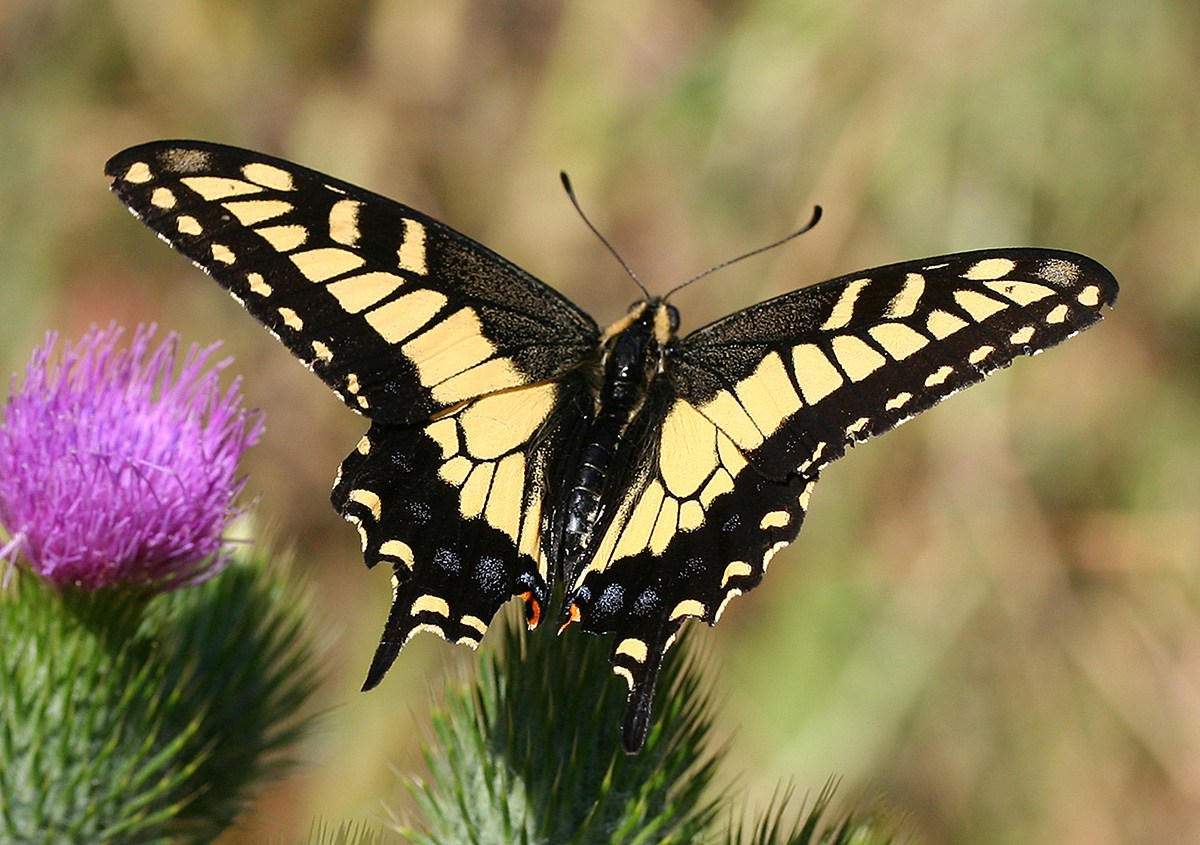
The Anise Swallowtail Butterfly is a fascinating species that captivates nature enthusiasts and butterfly lovers alike. With its striking appearance and unique behaviors, this butterfly has become a subject of curiosity and admiration. In this article, we will delve into some intriguing facts about the Anise Swallowtail Butterfly that will deepen your understanding of this captivating creature. From its appearance to its life cycle, habitat, and ecological importance, we will explore the various aspects that make the Anise Swallowtail Butterfly a remarkable species. So, let’s embark on a journey into the enchanting world of the Anise Swallowtail Butterfly and uncover some lesser-known facts about this stunning creature.
Key Takeaways:
- The Anise Swallowtail Butterfly is a stunning native species of North America, known for its wide range of habitats and important role as a pollinator, aiding in the reproduction of plants.
- With a wingspan of up to 4 inches, the Anise Swallowtail Butterfly undergoes a fascinating metamorphosis and serves as a symbol of transformation and growth in nature.
The Anise Swallowtail Butterfly is a native species of North America.
The Anise Swallowtail Butterfly (Papilio zelicaon) is a common and beautiful species of butterfly native to North America. It is known for its distinctive black wings adorned with yellow spots and striking blue coloring near the body.
These butterflies have a wide range of habitats.
The Anise Swallowtail Butterfly can be found in a variety of habitats, including meadows, gardens, open fields, and forest edges. They are particularly attracted to areas with an abundance of nectar-producing flowers.
The Anise Swallowtail Butterfly undergoes a complete metamorphosis.
Like all butterflies, the Anise Swallowtail goes through a complete metamorphosis, which includes four distinct stages: egg, larva (caterpillar), pupa (chrysalis), and adult butterfly. Each stage plays a vital role in the life cycle of this fascinating creature.
They lay eggs on specific host plants.
The female Anise Swallowtail Butterfly lays her eggs on specific host plants, primarily members of the carrot family, such as fennel, dill, parsley, and Queen Anne’s lace. The caterpillars hatch from these eggs and feed on the host plant leaves.
Anise Swallowtail Caterpillars mimic bird droppings for protection.
One of the intriguing defense mechanisms of the Anise Swallowtail caterpillar is its ability to mimic bird droppings. By camouflaging themselves in this way, they are less likely to be eaten by predators.
Adult Anise Swallowtail Butterflies feed on nectar.
Once they have completed their transformation into adult butterflies, Anise Swallowtails rely on nectar as their primary source of food. They are particularly attracted to flowers such as milkweed, thistles, and wild bergamot.
They have a wingspan of up to 4 inches.
The Anise Swallowtail Butterfly is known for its impressive wingspan, which can reach up to 4 inches. This large size, combined with its striking coloration, makes it a visually captivating species of butterfly.
Anise Swallowtails are migratory butterflies.
During the autumn months, Anise Swallowtail Butterflies can be observed migrating southward to warmer regions. This migration ensures their survival during colder winters when food sources become scarce.
They are important pollinators.
Anise Swallowtail Butterflies play a crucial role in the pollination of various plant species. As they feed on nectar, they inadvertently transfer pollen from one flower to another, aiding in the reproduction of plants and ensuring their genetic diversity.
Anise Swallowtails are a symbol of transformation and growth.
Throughout history, butterflies have been associated with transformation, growth, and rebirth. The Anise Swallowtail Butterfly, with its remarkable life cycle and stunning appearance, serves as a reminder of the beauty and resilience of nature.
So, the next time you spot a graceful Anise Swallowtail Butterfly fluttering by, take a moment to appreciate its remarkable journey and the vital role it plays in our ecosystem.
Conclusion
In conclusion, the Anise Swallowtail Butterfly is a fascinating creature with its vibrant colors, unique lifecycle, and interesting behaviors. From its preference for specific plants to its migration patterns, this butterfly species captivates the attention of nature enthusiasts and researchers alike. By understanding these 10 Anise Swallowtail Butterfly facts, we gain a deeper appreciation for the beauty and complexity of the natural world. So, the next time you spot this graceful butterfly fluttering by, take a moment to marvel at its elegance and remember the remarkable characteristics that make it truly extraordinary.
FAQs
Q: What do Anise Swallowtail Butterflies eat?
A: Anise Swallowtail Butterflies primarily feed on nectar from various flowering plants, but they also have a distinct preference for plants from the carrot family, such as fennel, dill, and parsley.
Q: How long does the Anise Swallowtail Butterfly live?
A: The lifespan of Anise Swallowtail Butterflies varies, but on average, they live for about one to two months. However, their lifespan can be longer in cooler climates, where they may hibernate during the winter months.
Q: Where can I find Anise Swallowtail Butterflies?
A: Anise Swallowtail Butterflies are primarily found in North America, specifically in the western and southern regions. They can be spotted in gardens, open fields, meadows, and other areas abundant with their preferred host plants.
Q: Do Anise Swallowtail Butterflies migrate?
A: Yes, Anise Swallowtail Butterflies are known to migrate. They can travel long distances, especially in search of food and favorable breeding habitats. Some populations undertake seasonal migrations, while others are more sedentary.
Q: How can I attract Anise Swallowtail Butterflies to my garden?
A: To attract Anise Swallowtail Butterflies to your garden, you can plant their preferred host plants like fennel, dill, and parsley. Additionally, providing a variety of nectar-rich flowering plants will help entice these beautiful creatures.
Was this page helpful?
Our commitment to delivering trustworthy and engaging content is at the heart of what we do. Each fact on our site is contributed by real users like you, bringing a wealth of diverse insights and information. To ensure the highest standards of accuracy and reliability, our dedicated editors meticulously review each submission. This process guarantees that the facts we share are not only fascinating but also credible. Trust in our commitment to quality and authenticity as you explore and learn with us.


